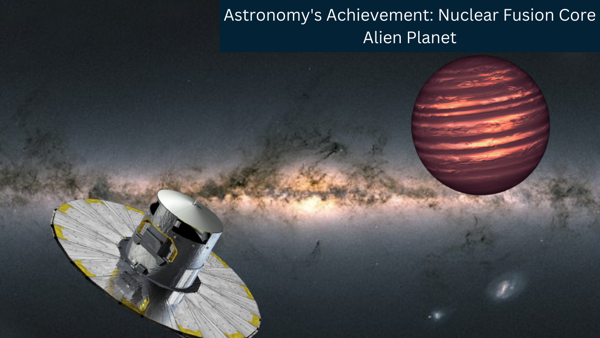
Science & Space
Exoplanet Alert: Nuclear Fusion At The Core The Unique Gas Giant
An international team of scientists, led by professor "Sasha Hinkley" of Exeter University, London, found an exoplanet with the help of the European Space Agency's Gaia Spacecraft.
This newly discovered exoplanet is a gas giant with a nuclear fusion core that generates energy. The core of any planet typically generates energy through radioactive decay, which generates heat for the planet and also causes plate tectonic movements, but the presence of nuclear fusion at the core is a remarkable discovery.
The name of the astonishing exoplanet is HD 206893 c, which is roughly 300 million miles (483 million kilometers) away from its parent star, HD 206893 and it is 130 light years away from our Solar system.
The HD 206893 c is a brown dwarf, typically known as a "failed star" because these planets should have been stars but did not become so for a variety of reasons.
According to NASA, HD 206893 is an F-type star, which is moderately hot with surface temperatures ranging from 6000K to 7400K, much lower than our sun, which is a G-type star with a surface temperature ranging from 5000K to 6000K. Both are yellow dwarfs, but the F-type stars are much whiter with a yellow tinge.
The fusion core exoplanet is 13 times heavier than the solar system's biggest gas giant Jupiter, with an orbital radius of 3.53AU (328,134,000 miles), and its own radius is 1.46 times of Jupiter, which is equivalent to 1,02,070.06 kilometers or 63423.4 miles.
Following Gaia's data, the scientific team again used the GRAVITY instrument on the "Very Large Telescope" in the Atacama Desert of Northern Chile to confirm the strange exoplanet's architecture and its core's reaction.
The exoplanet was discovered in 2022 after being identified in 2019. Its nuclear fusion core has now been discovered. Scientists used the direct imaging method at the time of its discovery, but now ESA uses the new method "Wobble of Stars" to confirm its strange architecture.
The eccentricity of the planet is 0.41(+- 0.03). The eccentricity measures the planet's orbit from circularity. If the eccentricity is zero then the planet's orbit is a circle when the eccentricity is higher than zero then the path became elliptical.
Scientists came to the conclusion about the nuclear fusion core of the planet by analyzing the light spectrum from the planet's atmosphere. The apparent brightening of the object indicates that the core of this massive planet is undergoing nuclear fusion using deuterium, a hydrogen isotope that carries a neutron.
Gaia Mission
Gaia is scanning the universe's 2 billion objects to create the most detailed 3-dimensional map of our galaxy.
Gaia monitors each of its largest stars 14 times per year. Thousands of new celestial objects, such as extrasolar planets and brown dwarfs, as well as thousands of asteroids, are expected to be discovered. It scanned the most exciting exoplanet of the decade, whose engine is powered by nuclear fusion, in between scans.
Scientists have now decided to use the most powerful space telescope, the James Webb Space Telescope, to scan and analyze the HD 206898 c in order to collect more data.
It is also researching over a million Quasars and developing new test data for Einstein's General Theory of Relativity.
Hinkley said in a statement that "The discovery of HD 206893 c is a really important moment for the study of exoplanets", and it truly is because fusion exoplanets are extremely rare and impossible to find. As a result, there is the possibility of opening a new door to investigate the new avenues of planetary systems. The discovery demonstrates that Gaia can point to potential exoplanets, that will change the course of exoplanet hunting.

0 Comments